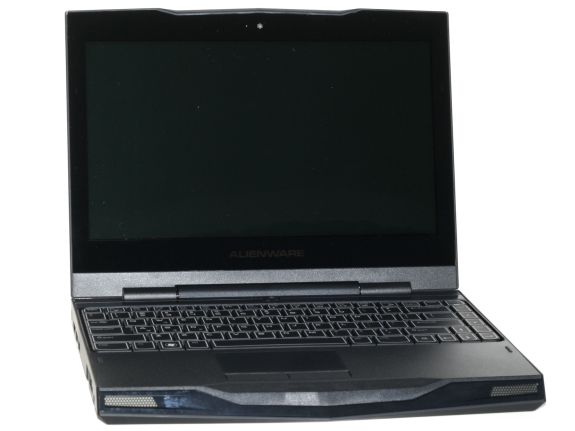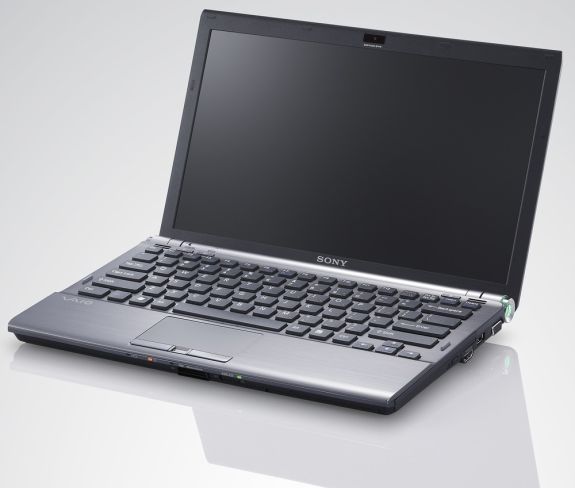Laptop Buyer's Guide: 14-inch and Smaller
by Vivek Gowri on July 19, 2010 12:01 AM ESTGaming Portable: Alienware M11x
This pick is almost a given, but hey, can you blame us? Alienware’s gaming ultraportable has been all the rage since it was unveiled at CES 2010, and for good reason: an overclocked CULV processor and an NVIDIA GT 335M dedicated graphics card in an 11.6”, 4lb frame starting at $799? Yes please!
Now, since then, the familiar Core 2 Duo ULV chip has been replaced with the new Arrandale ULV chips, Optimus has been added, and the pricetag has gone up to $949 (the old C2D model is still available for $799), but the principle behind the M11x remains the same: as much GPU as you can stuff into a 4lb chassis, at as low a price as possible. And given the performance, it’s not a philosophy we can argue with. The GT 335M absolutely screams when compared to basically any other portable notebook, and graphically, this is the most powerful notebook this side of 5.5lbs. So far, so good.
The performance side of the deal only got sweeter when the distinctly not-screaming 1.3GHz C2D was replaced with the new i5/i7 ULV chips. This isn’t to say that the original CULV platform was slow; it was certainly adequate for most tasks and the overclocked version in the original M11x was better still, but it was never a powerhouse and definitely did hold the M11x back in certain games. That goes away for the most part with Arrandale’s dynamic clock speed adjustment that can boost processing frequency to 2.13GHz when needed. And even with all the computing power under the hood, the M11x can still last nearly 8 hours on battery power. Pretty sweet, and certainly worthy of the Silver Editor’s Choice Award we gave it last week.
Which isn’t to say that everything is all and well in the M11x’s world: the styling is polarizing, the build quality and keyboard aren’t anything special, and the lack of Gigabit Ethernet strikes us a bit daft in this day and age. But the biggest issue is the screen. As usual, the panel itself isn’t of particularly high quality, but the bigger problem is that the M11x chassis is easily big enough to handle at least a 12” screen, or a even a 13.3” panel in a pinch. Considering that at 4lbs, it’s about the same size and weight as most 13.3” notebooks, Alienware had no real reason to equip the M11x with just an 11.6” WXGA screen. If they could ship it with a WXGA+ (1440x900 or 1600x900) 13.3” screen, it’d be set. However, these are all nits to pick - it’s still the fastest notebook of it’s size by a long ways.
Alternative #1: Sony VAIO Z series
The Z series from Sony is the only sub 4lb notebook in the same performance range as the M11x. It has standard voltage Core i3/i5/i7 processors and the NVIDIA GT 330M graphics chip, which has less shader cores than the GT 335M (48 vs 72) and a faster clock speed (575MHz vs 450MHz). It also has dual 64GB SSDs in RAID 0 configuration, a high contrast 1600x900 13.1” display, and an integrated DVD burner, all in a 3.04lb package. Also, it carries a neat and tidy $1949 MSRP. Gaming performance is close and general performance is likely far better, but the price is just about double the M11x base price. So, it’s an alternative in that gaming performance will approach the M11x, but it isn’t really a competitor to the M11x in any sense of the word.
Alternative #2: ASUS U30Jc/U33Jc/U35Jc and UL30/50/80Jt
At the same price as the M11x, there is the previously covered ASUS ultraportable lineup, all of which have dedicated graphics cards. Yes, they all share the rather anemic GeForce 310M, but when you’re looking at 4lb laptops that get 10 hours of battery life, any form of dedicated graphics is a plus point. Unfortunately, the GeForce 310M is pretty far from adequate for anything other than older games, so if gaming performance is a high priority, the M11x will still kill all of these.












79 Comments
View All Comments
neothe0ne - Monday, July 19, 2010 - link
I feel like you did the Envy 14 an injustice by not even mentioning switchable graphics. And I don't believe the opening page with "NVIDIA dominates the portable market" - all Dells, most Sonys, all HPs, and then some are using ATI cards now.ExodusC - Monday, July 19, 2010 - link
Also, I'd like to note that from the users that have gotten their Envy 14s already, they have stated that it does not get uncomfortably hot (like the Envy 15 was known to). It apparently stays relatively cool, even while gaming (not sure about something super intensive like 3DMark or Furmark).KZ0 - Monday, July 19, 2010 - link
In very many of the reviews I've read here, it has been commented on how the screen sucks, as usual. When there finally is an affordable notebook with a great 1600x900 14" screen, it's not even commented on? Why? I know some models (non US-factory, the Amazon model, etc) have a 1366x768 display, but the HD+ screen is even included in the base 1099 USD factory price!When there's no review model available, at least use what info there is (user reviews) instead of speculation! And the i7 quad option isn't even a reasonable upgrade for most people, killing battery life (not having an integrated GPU to use the switchable graphics, and higher power consumption), making more heat / noise, and not providing much of a performance increase for most people.
A review or analysis on Anandtech is generally very good, and I've been following the site for quite some time now (though not posting), but this disappoints me.
JPForums - Monday, July 19, 2010 - link
Don't be disappointed. This is Anandtech. They don't claim to be perfect, but they do accept feedback. If you bring up legitimate concerns, they are pretty good about fixing it for future articles. You may even get an update to a current article.That said I'd like to voice my opinion that 1600x900 or better resolution screens in a 14" or smaller notebook is a very compelling feature. Such a screen may be worth the trade off in battery life and/or cost as there are cases where the increased desktop real estate results in a significant increase in productivity. This productivity boost is not easy to measure, but at least warrants a word.
TareX - Friday, March 4, 2011 - link
My Envy 14 has a Radiance 900p screen that simply blows away every other 14" Laptop screen in the market.It is NOT plagued by the older generation Envy laptops' issues with heat.
I am quite perplexed by this Anadtech article. If they didn't review it, they could have at least read the impressions of other sites whose editors actually used the new Envy 14.
VivekGowri - Monday, July 19, 2010 - link
By "the portable market" I was meaning laptops smaller than 14" (which this buyer's guide was focusing on) as distinct from the more mainstream and desktop replacement markets.How many 12" and 13" non-AMD laptops can you name with ATI graphics? Off the top of my head, the Sony S series has an optional ATI HD 5470 card, and the Lenovo U450p that had an HD 4330 switched to Nvidia when it got bumped to Arrandale. Other than that, a lot of the really portable notebooks tend to use Nvidia GPUs. Cases in point: the entire Asus portable lineup, the M11x, the VAIO Z, the Lenovo U460, etc etc etc. So I think it was a fair term.
Once you start getting to 14" and larger notebooks, you start seeing a lot of ATI GPUs, yes, but not in notebooks smaller than that.
ExodusC - Monday, July 19, 2010 - link
I should have stated I don't necessarily agree with neothe0ne. I replied to his comment as it was related to the Envy 14. I have to agree with you, actually, that NVIDIA has dominance with their mobile parts. From what I understand, AMD is gaining ground, in that market segment though, are they not?I mainly wanted to question the Envy 14 getting hot-- from everything I've read, it really doesn't get that hot (maybe in a lap, if the vents are covered? I figure anyone using the dGPU will be gaming, and therefore plugged into an outlet and on a desk).
Most importantly, Vivek, is AnandTech planning a review? Last I heard it was hard to get a review unit, but I'm really curious if AT has heard anything from HP about it. The Envy 14 seems to be gaining a lot of popularity as a MBP-alternative, as many people have an anti-Apple stigma.
ExodusC - Monday, July 19, 2010 - link
Oh, and one last thing, the Envy 14's battery may be sealed in, but it's easily removable by flipping a simple switch. I know it's a minor thing, but when I read the article, it seemed to suggest the battery was non-removable, like the MBP.:)
ExodusC - Monday, July 19, 2010 - link
Well, after a second look some users report it getting hot, others say it doesn't get hot. I guess it depends what kind of load it's under.Visual - Monday, July 19, 2010 - link
The HP tm2 uses ATI 4550, and it being a tablet convertible has better portability than any of the ones included in this "guide", while not being far in performance too. I'm actually surprised it was not mentioned.